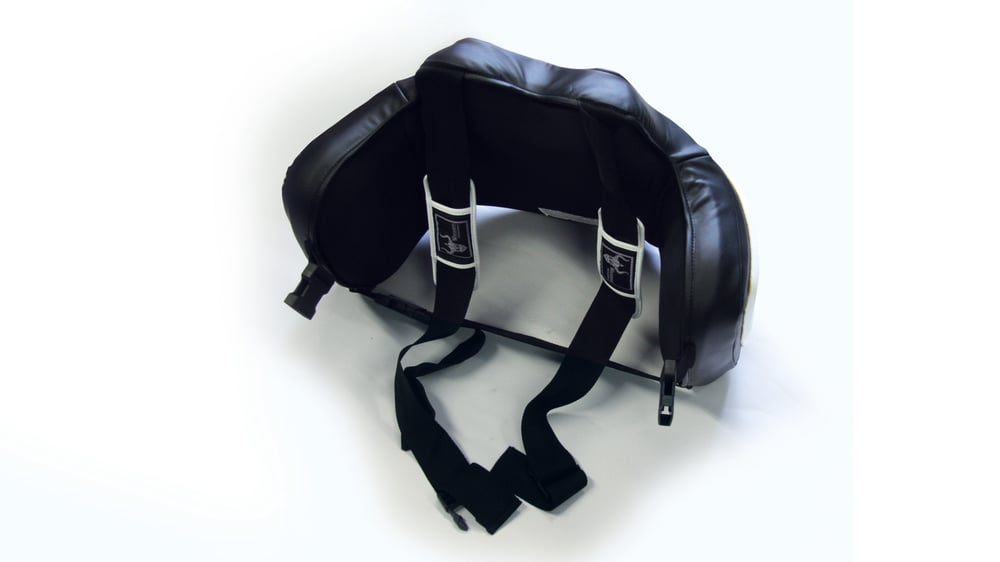
Issue 054
September 2009
Punchbags are one of the best pieces of equipment you can have, but nothing can compare to a real, live training partner. If only we could hit them as hard as we do the bag! That’s why MMA fighters use body protectors.
Why use them?
So that you can practice your body shots on a moving target without upsetting your training partners.
When would you use them?
Depending on the type you have, they can be used with either Thai or focus pads to develop your combinations, or for practicing heavier shots against an opponent who’s hitting you back. The lighter full-body protectors can even be worn for sparring, but doing this too often can lead to bad habits. It’s easy to get careless with your defense
when you’re covered in foam padding!
GENERAL TIPS
Try before you buy
If you feed pads regularly and you’re going to be spending a lot of time wearing this with people hitting you, then you need one that will feel relatively comfortable to wear. Make sure when you put it on that your target areas are well covered – consider the likelihood and consequences of a fighter missing!
If you know someone who’s got the one you want, then borrow it and try it out for a session. Failing that then at least try it on, move around in it and feel what it’s like to take a shot through it. If you’re buying online, then check before you buy that you have the option to send it back – and be prepared to do that if it’s not right for you! For mixed martial artists, poor or unsuitable equipment can be a significant cause of injury.

Types of body protectors
Belly pad
The traditional Muay Thai belly pad is shaped like a title belt, with a padded target at the front and sometimes also at the sides. This is used in combination with Thai pads. It’s particularly useful for working knees, foot jabs and front kicks. The disadvantage with this design is that it requires a reasonable level of accuracy. Every once in a while someone misses the target!
Full body protector
These come in many different designs. Some are lightweight, others much more heavy-duty. They vary in how much of the body is covered, and in the thickness and firmness of the padding. These can be used for sparring as well as for drilling or feeding combinations.
‘Hybrid’ versions
These fall somewhere in between the belly pad and the full body protector. They are designed for a pad man or feeder rather than for use during sparring and may have very thick padding. The target area is larger than with a belly pad, however, giving a wider selection of targets for body hooks and round kicks. They are usually secured with straps that go over the shoulders.
Padding
This varies greatly. Some have big, soft target areas, while others are much more slimline and firm. It is usually made out of different types of foam, although some body protectors on the market also advertise the use of gel padding.
What’s best for you is largely down to personal preference, but you want something that feels realistic to hit – you don’t want to feel that you’re punching a giant pillow!
On the other hand, you want something that’s going to give adequate protection to the person wearing it, especially if you feed a lot of rounds.
Materials
As with Thai pads, body protectors come in a variety of materials. Leather is the most durable, but PVC nylon can be an acceptable substitute if the quality and workmanship are good.
...









